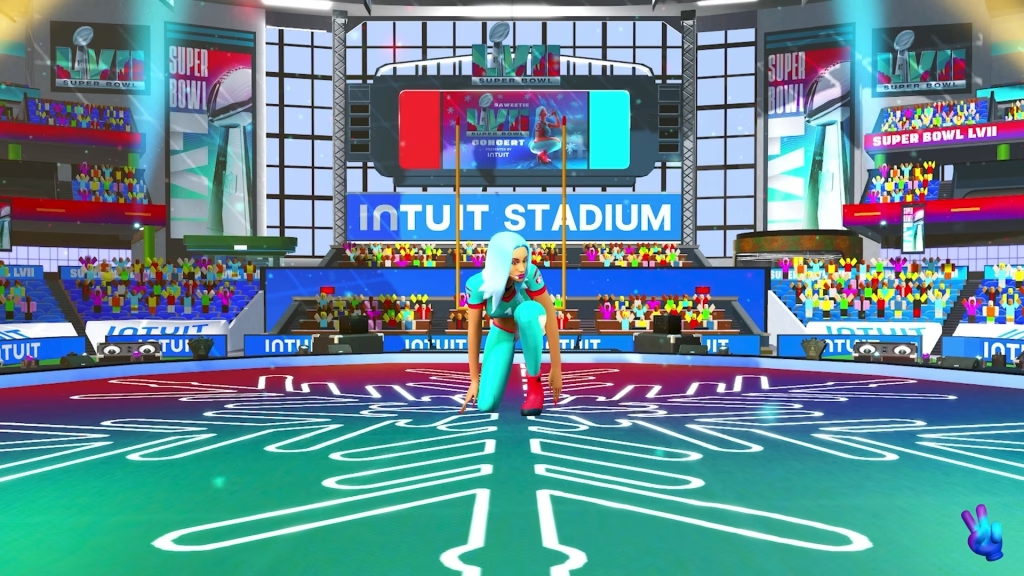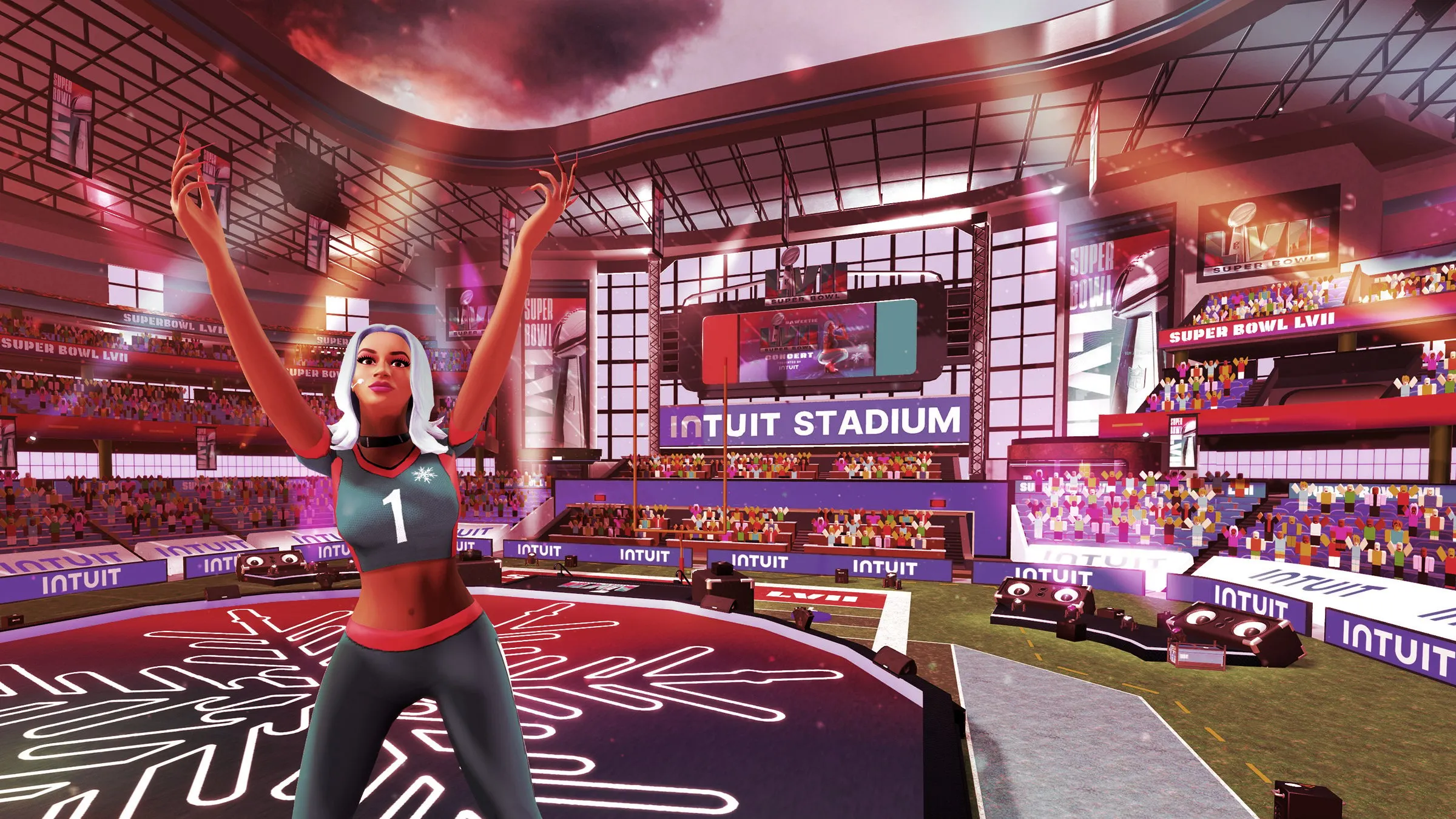With the integration of virtual reality and blockchain technology, the notion of “skybox” has transcended the physical boundaries of the stadium and has made its way to the metaverse. For Super Bowl LIX, fans will get the chance to view the game from the comfort of their homes or any part of the globe while enjoying the amenities and exclusivity that comes with a stadium suite. Metaverse skyboxes offer a new paradigm in sports hospitality by merging live 360° feeds, interactive social lounges, and NFT-based ownership to redefine how we experience the Super Bowl. In this article, I focus on the construction of virtual suites for Super Bowl LIX, the participation avenues available for fans and corporations, and the preliminary digital experience considered from a technological standpoint.
The Rise of Virtual Suites in Sports

In the past, stadium suites gave fans an exclusive catered hospitality private perch with a view of the field, and a kitchenette. Implementing this in the metaverse goes beyond streaming live footage into a VR headset; it requires crafting a virtual space that captures, and goes beyond, the luxurious feel and the social experience of a real suite. For Super Bowl LIX, the NFL is working with several platforms to create custom skyboxes. Fans have avatars which automatically enter North End Zone suites, branded lounges and voice channels, and watch the game live in 4K Ultra HD on virtual jumbo screens. These spaces provide not only the opportunity to see the live feed of the game, but also real life stats, multi-camera replays, and additional content from various angles. Unlike the stadium suites, the virtual suites allow unprecedented levels of customization and dynamism.
Creating a Metaverse Skybox Experience
Engaging with a metaverse suite requires attention to detail around the atmosphere, UI, and community interaction. Designers start off creating a dual model of the stadium suite’s seating, private bars and hospitality lounges which includes working with the real stadium’s architects to retain the proper look and feel. Fans can decorate their virtual windows overlooking the live match with customizable suite decorations which include team merch, animated banners and even NFTs that capture the view framed digitally. Voice integration allows for the exchange of digital ‘high-fives,’ virtual concession orders that are actually delivered, and celebration animations activated – global command for confetti bursts and pyro destruction synced when touchdowns are scored. Social capabilities let the host design guest lists and grant holo meet-and-greet VIP privileges with NFL legends, lock sub-rooms for private dialogues away from the main viewing area. By lowering the social and physical constraints, metaverse skyboxes facilitate a club feeling of an in-stadium suite.
Commercial Opportunities and Fan Engagement
NFT skyboxes increase monetization and sponsorship opportunities for both partner brands and the NFL. Companies can buy entire virtual suites as branded spaces, animating every surface from walls to bar counters and even ceiling tiles with advertisements that interact with avatars through touch or gaze. Sponsors can hand out limited edition NFTs—like digital collectibles during the halftime show— or offer token gated giveaways for suite guests. Suite pass holders gain access to the virtual space and real world benefits like a next year’s game tickets, exclusive merchandise, and invitations to live event hospitality lounges. Suite screens offer interactive polls and mini games that grant token airdrop rewards, allowing participants to actively engage with the brand while providing valuable insight into fan preferences and behavior.
Metaverse-System Architecture Elements
Creating a metaverse experience for a Super Bowl scale event requires advanced infrastructure. Fans expect ultra-fast streaming performance: less than 200 milliseconds of delay from the stadium feed to their real-time social VR views, otherwise they cannot interact. 360° video rendering is done by edge-compute nodes located at population centers, WebRTC voice and avatar animation update streams do the rest. Graphics engines, typically Unreal or Unity-based, impose render frame caps on high-end VR headset clients to restrict detail level throttled to avoid motion sickness. Console and desktop users are not exempt. Figures have to be readjusted on the fly to keep the frame rate stable. Vertical scaling is provided by containerized microservices that add suite instances. This enables thousands of users to occupy skyboxes and maintain performance. Ownership security layers guard NFT records in the blockchain, ticket sharing fraud is stopped, and legitimacy is guaranteed by single-sign-on systems associated with NFL digital identities.
Future Innovations in Stadium Hospitality

With the introduction of metaverse skyboxes for Super Bowl LIX, the future of hospitality will continue the gradual merge between the physical and the virtual. Subsequent versions may support remote-viewing parties with hospitality tents airdropping the same virtual stats and NFT reward interactivity as remote-viewers in the metaverse. Cross-platform loyalty wallets will integrate real-world suite usage with tethered virtual attendance, granting points that can be redeemed for digital collectibles or experiences inside the stadium. Sooner than imagined, advancements in haptic feedback suits could enable virtual suite occupants to experience the sensation of the crowd’s cheers, or the thundering sound of a kickoff. Ultimately, the success of the Super Bowl’s virtual skyboxes will rest on the achievement of finding equilibrium between human shared enthusiasm and technological mastery. Each avatar-fan should be able to access a portion of the warmth, excitement, drama, and camaraderie that surround the world’s biggest sporting event.

Leave a Reply